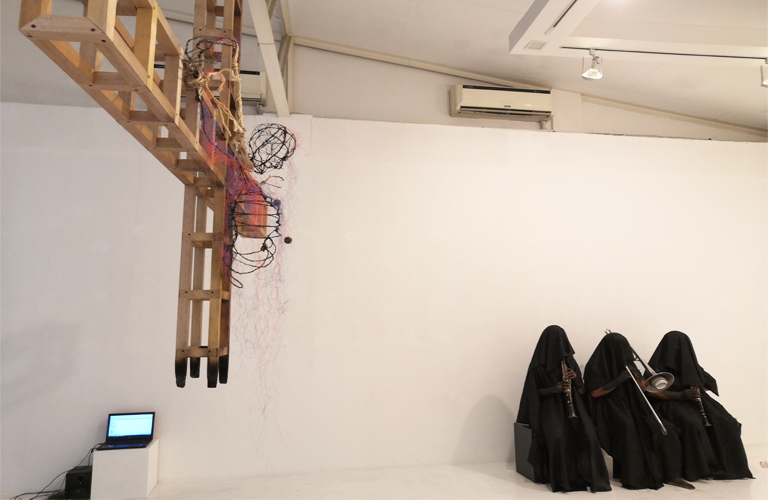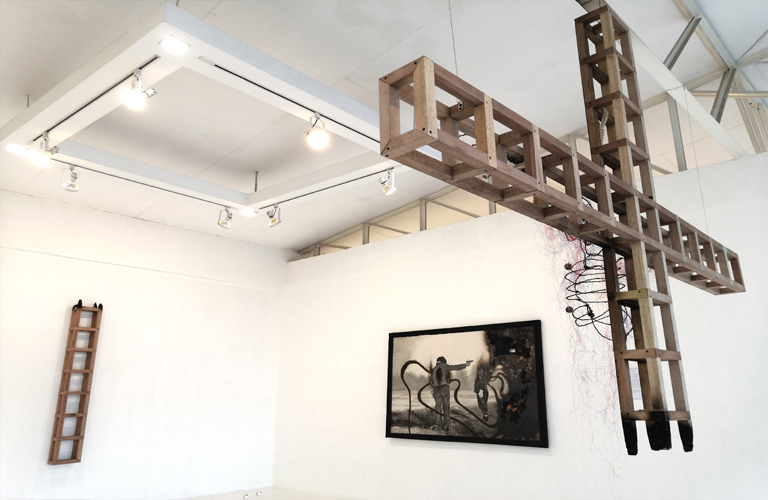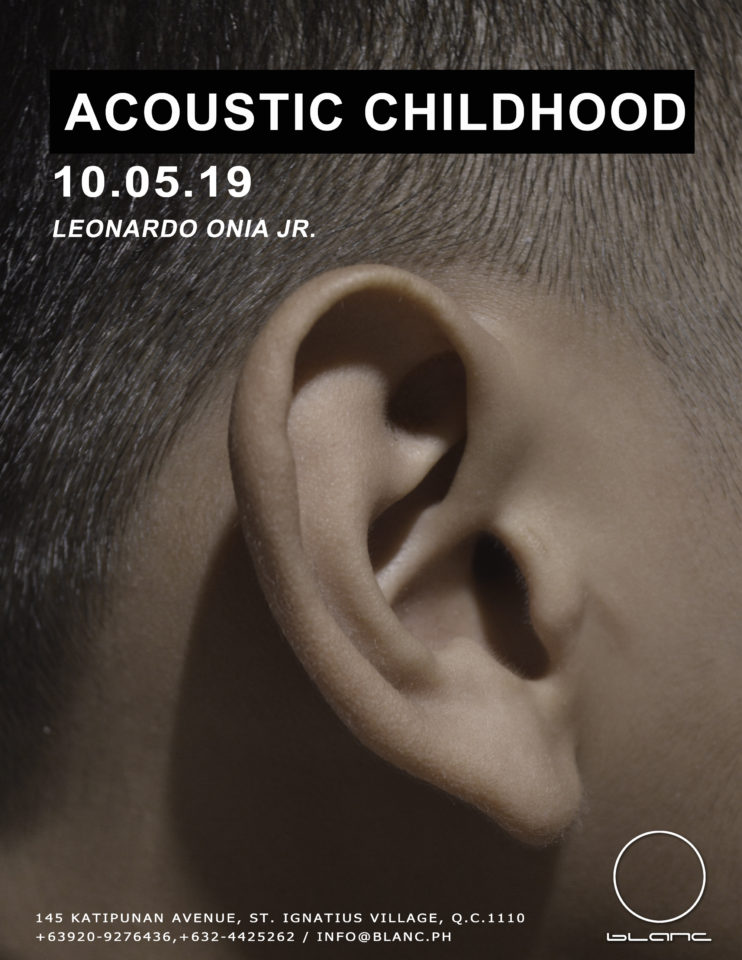
ACOUSTIC CHILDHOOD
What Leonardo Onia Jr. remembers from his youth are sounds and symbols that had defined a period of vulnerability to social conventions. “Acoustic Childhood” frames the viewer for an auditory experience, which cuts across the visual re-creation of fragments from the artist’s memory. As a young boy, Onia was raised in a heavily Catholic environment where many representations of his past were connected to symbols of the church and its activities. However, “Acoustic Childhood” is not about Onia’s criticism of the institution but rather a slow presentation of epiphanies that captured his dynamics, which would form his freedom from life’s invisible fences.
Thus, we focus our gaze at a burnt cross —a principal symbol in Christianity recalling the redemption of humanity through Christ’s sacrifice. However, to Onia, the figure stands as a hovering hound of guilt; Like a scarecrow in the middle of a farmland, with all its might and authority, it cannot be dissuaded. And so, the artist breaks it with fire, an element that dominates Onia’s body of work. The use of fire as a medium draws parallel to his evolution as a person and as an artist. The ability to manipulate fire, as he keeps at bay with precision, and the exactness of the burned parts of the objects become similar to how a person should allow himself to gain independence to take control of his life. Included here are anonymous voices reciting the “Rosary” surrounding the space; sounds from a performed ritual being lain over, it is an act of reclamation: the artist recouping himself by dissonance. “Acoustic Childhood”, at best, is Onia’s reconciliation of his past with a declaration of his strength to overcome forces that limit one’s being. What we have in front of us is the quiet and yet evocative task of remembering —perhaps, done with grace and strength, for how can we look at an era that sends us back to our fragile selves? Only when we can procure the fortitude to do so.
Like Onia’s ability to work with fire, the exhibition confronts us with the traction that pulls us to situations that narrate, perhaps, agonizing realities of a bygone time. It may be different from our own forgotten shards of memory but our capacity to remember and redeem ourselves will be something that we must learn to keep, without getting entirely burned.
Gwen Bautista
Works
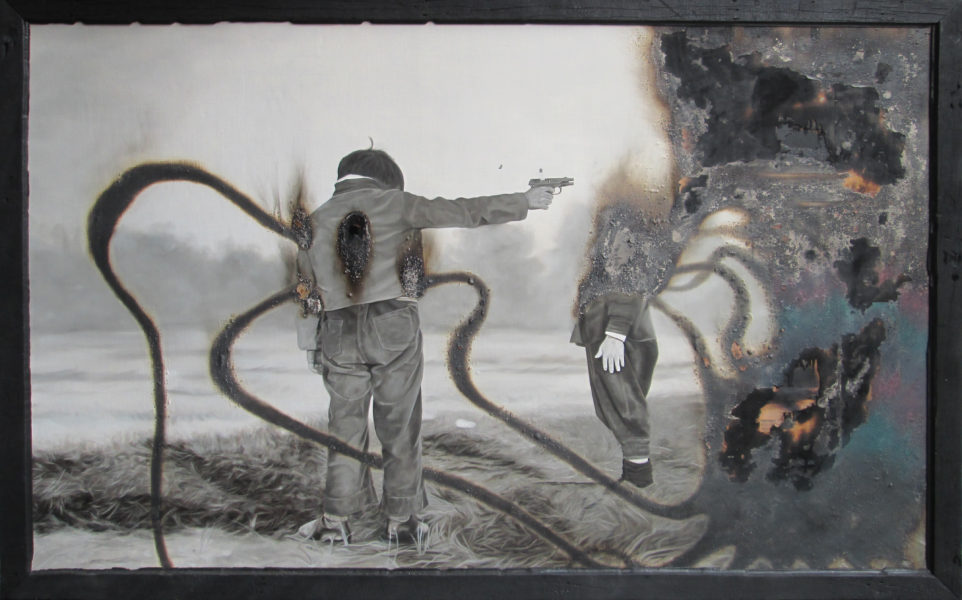
DESTROYING DOGMA

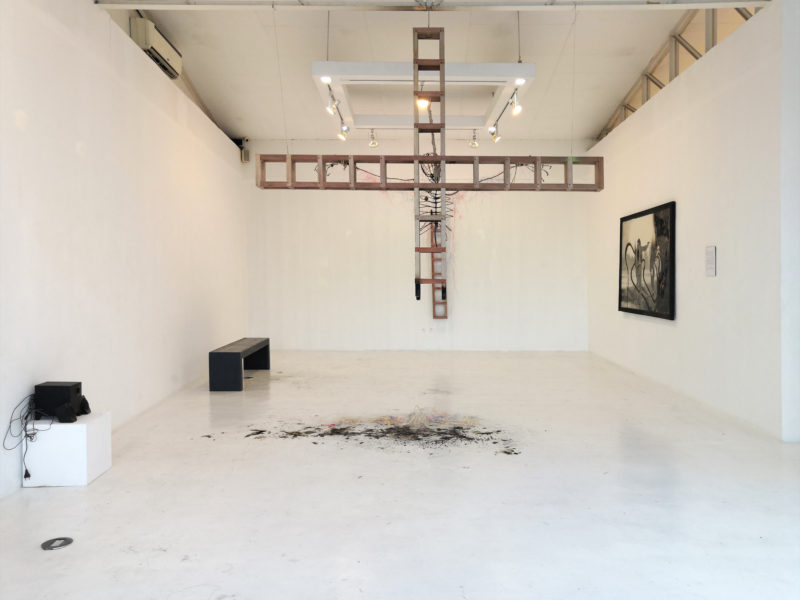
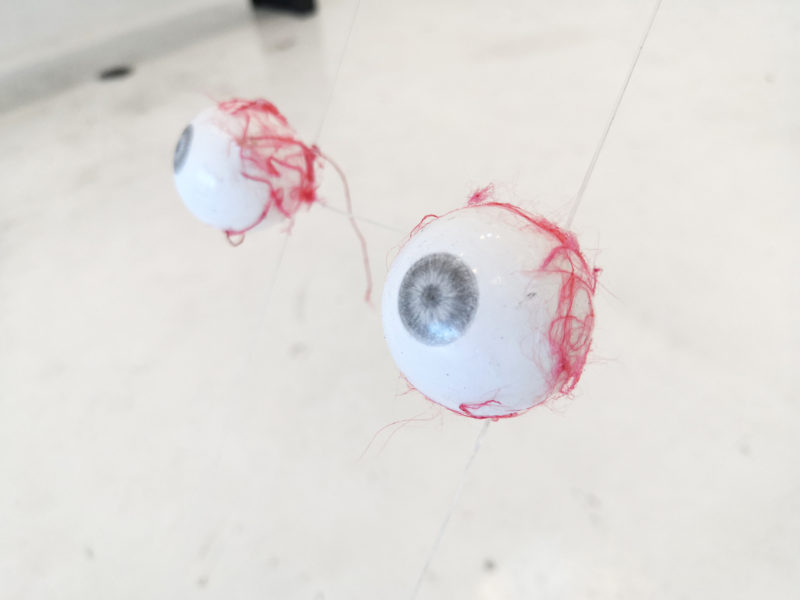
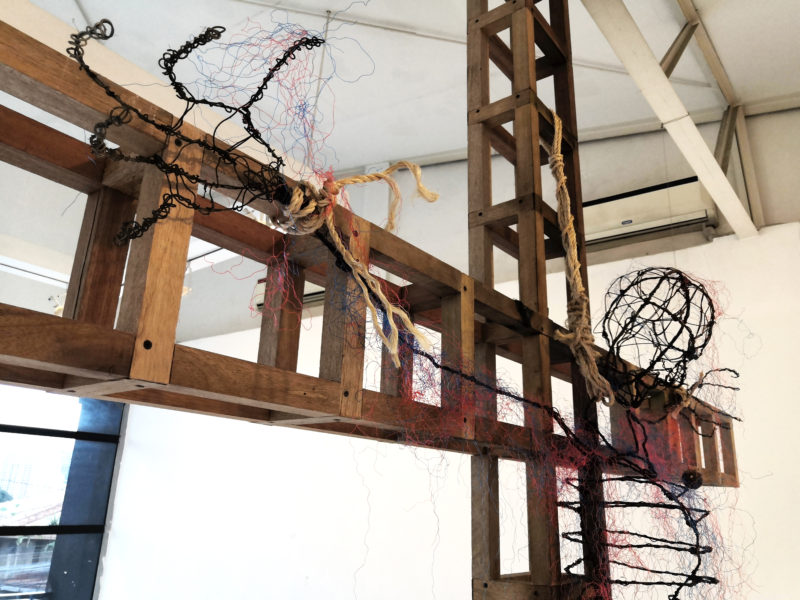
Documentation
